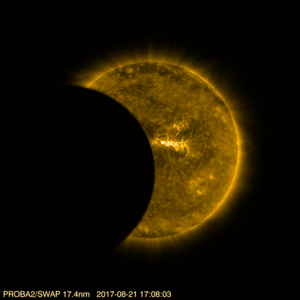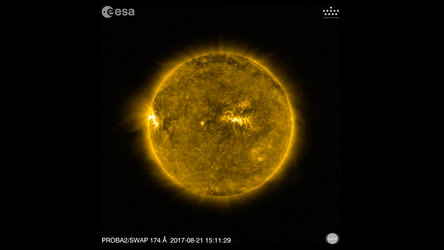Accept all cookies Accept only essential cookies See our Cookie Notice

About ESA
The European Space Agency (ESA) is Europe’s gateway to space. Its mission is to shape the development of Europe’s space capability and ensure that investment in space continues to deliver benefits to the citizens of Europe and the world.
Highlights
ESA - United space in Europe
This is ESA ESA facts Member States & Cooperating States Funding Director General Top management For Member State Delegations European vision European Space Policy ESA & EU Space Councils Responsibility & Sustainability Annual Report Calendar of meetings Corporate newsEstablishments & sites
ESA Headquarters ESA ESTEC ESA ESOC ESA ESRIN ESA EAC ESA ESAC Europe's Spaceport ESA ESEC ESA ECSAT Brussels Office Washington OfficeWorking with ESA
Business with ESA ESA Commercialisation Gateway Law at ESA Careers Cyber resilience at ESA IT at ESA Newsroom Partnerships Merchandising Licence Education Open Space Innovation Platform Integrity and Reporting Administrative Tribunal Health and SafetyMore about ESA
History ESA Historical Archives Exhibitions Publications Art & Culture ESA Merchandise Kids Diversity ESA Brand Centre ESA ChampionsLatest
Space in Member States
Find out more about space activities in our 23 Member States, and understand how ESA works together with their national agencies, institutions and organisations.
Science & Exploration
Exploring our Solar System and unlocking the secrets of the Universe
Go to topicAstronauts
Missions
Juice Euclid Webb Solar Orbiter BepiColombo Gaia ExoMars Cheops Exoplanet missions More missionsActivities
International Space Station Orion service module Gateway Concordia Caves & Pangaea BenefitsLatest
Space Safety
Protecting life and infrastructure on Earth and in orbit
Go to topicAsteroids
Asteroids and Planetary Defence Asteroid danger explained Flyeye telescope: asteroid detection Hera mission: asteroid deflection Near-Earth Object Coordination CentreSpace junk
About space debris Space debris by the numbers Space Environment Report In space refuelling, refurbishing and removingSafety from space
Clean Space ecodesign Zero Debris Technologies Space for Earth Supporting Sustainable DevelopmentLatest
Applications
Using space to benefit citizens and meet future challenges on Earth
Go to topicObserving the Earth
Observing the Earth Future EO Copernicus Meteorology Space for our climate Satellite missionsCommercialisation
ESA Commercialisation Gateway Open Space Innovation Platform Business Incubation ESA Space SolutionsLatest
Enabling & Support
Making space accessible and developing the technologies for the future
Go to topicBuilding missions
Space Engineering and Technology Test centre Laboratories Concurrent Design Facility Preparing for the future Shaping the Future Discovery and Preparation Advanced Concepts TeamSpace transportation
Space Transportation Ariane Vega Space Rider Future space transportation Boost! Europe's Spaceport Launches from Europe's Spaceport from 2012Latest

The Sun, 21 August 2017
Thank you for liking
You have already liked this page, you can only like it once!
While observers in North America will enjoy views of a total solar eclipse later today as the Moon slips between Earth and the Sun, it’s business as usual for our Proba-2 and SOHO satellites.
Proba-2 is expected to capture a series of partial eclipses, while SOHO will provide context images of the Sun and its extended atmosphere, or corona. The corona can only be seen from Earth with the naked eye during an eclipse when the Moon blocks out the bright light from the Sun, but SOHO can observe it all the time using special filters and ‘occulting masks’.
An example can be seen here, which is a composite of two SOHO images and a Proba-2 image taken earlier this morning, and composed using JHelioviewer. The central image shows an extreme-ultraviolet image of the solar disc taken by Proba-2 at 05:39 GMT, while the corona and extended atmospheric features are seen by SOHO in the red image from 2–6 solar radii, and beyond in blue (SOHO can see up to about 32 solar radii) at 00:48 and 00:54 GMT, respectively. The black circular region corresponds to an occulting mask to cut out direct sunlight that would otherwise obscure the details close to the Sun – similar to the effect of the Moon in a total solar eclipse.
Near-realtime images of the Sun from SOHO are always available here, and in the days leading up to today’s total eclipse these frequent images give scientists an idea of how the corona will look during their observations. This enables them to plan specific observations of any special regions of interest, and in the context of the state of the Sun’s activity.
A team of dedicated astronomers from ESA will be studying the eclipse from the path of totality in the USA, hoping for clear skies to capture this celestial spectacular.
In addition, astronauts aboard the International Space Station, including ESA’s Paolo Nespoli, should also be able to see some aspects of the eclipse, such as a partial eclipse and the shadow of the Moon on the surface of our planet.
Follow ESA’s ground-based activities via http://cesar.esa.int and join the conversation on Twitter with #eclipse2017 and #solareclipse. We’ll keep you posted on our activities – from ground and space – via @esascience.
Remember: never look directly at the Sun, even when partially eclipsed, without proper eye protection such as special solar eclipse glasses, or you risk permanent eye damage.
-
CREDIT
SOHO (ESA & NASA); Proba-2: ESA/Royal Observatory of Belgium -
LICENCE
ESA Standard Licence

Proba-2 partial eclipse

A partial solar eclipse seen from space

Proba-2 partial eclipse, 26 February 2017

Eclipse context















 Germany
Germany
 Austria
Austria
 Belgium
Belgium
 Denmark
Denmark
 Spain
Spain
 Estonia
Estonia
 Finland
Finland
 France
France
 Greece
Greece
 Hungary
Hungary
 Ireland
Ireland
 Italy
Italy
 Luxembourg
Luxembourg
 Norway
Norway
 The Netherlands
The Netherlands
 Poland
Poland
 Portugal
Portugal
 Czechia
Czechia
 Romania
Romania
 United Kingdom
United Kingdom
 Slovenia
Slovenia
 Sweden
Sweden
 Switzerland
Switzerland

























